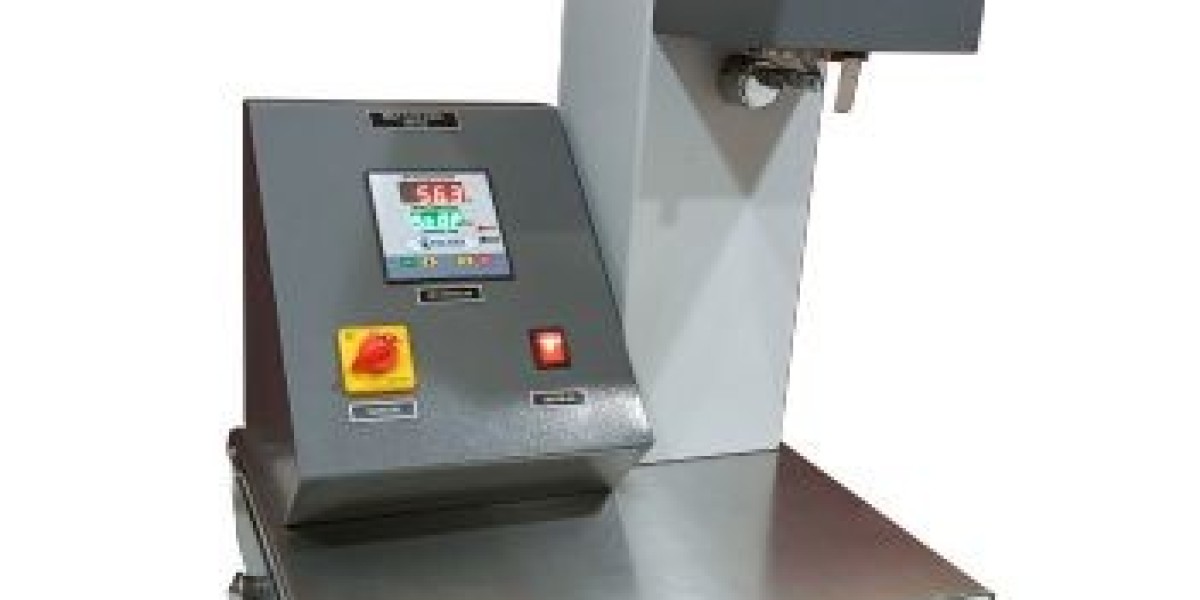In the realm of polymer processing and manufacturing, understanding the flow properties of plastic materials is crucial. The Melt Flow Index Tester, also known as the Melt Flow Rate (MFR) Tester, is an essential tool for evaluating these properties. This article explores the importance, applications, features, and benefits of the Melt Flow Index Tester, highlighting its role in ensuring the quality and consistency of plastic materials.
What is a Melt Flow Index Tester?
A Melt Flow Index Teste measures the rate at which a thermoplastic polymer melts and flows under a specified load and temperature. This test provides valuable insights into the material's viscosity, flow characteristics, and molecular structure, which are critical for determining its suitability for various applications.
Importance of Melt Flow Index Testing
- Quality Control: Ensuring the consistency and quality of plastic materials across production batches.
- Material Selection: Helping manufacturers select the appropriate material for specific applications based on its flow properties.
- Process Optimization: Assisting in optimizing processing conditions such as temperature and pressure for manufacturing processes.
- Regulatory Compliance: Ensuring materials meet industry standards and regulatory requirements for performance and safety.
- Product Development: Aiding in the development of new polymer formulations with desired properties.
Applications of the Melt Flow Index Tester
- Plastic Manufacturing: Assessing the flow properties of raw materials to ensure they meet production specifications.
- Quality Assurance: Regular testing of products to maintain consistent quality and performance.
- Research and Development: Analyzing new polymer formulations and modifications to existing materials.
- Injection Molding and Extrusion: Optimizing processing conditions to improve product quality and reduce defects.
- Recycling: Evaluating the flow properties of recycled materials to ensure they can be effectively reused.
Key Features of the Melt Flow Index Tester
- Precision Temperature Control: Ensures accurate and consistent test conditions, providing reliable results.
- Automated Testing: Modern testers feature automated systems for loading, testing, and data recording, enhancing efficiency and reducing human error.
- Digital Display: Provides real-time readings of melt flow rate and other critical parameters, facilitating easy monitoring and analysis.
- Versatility: Capable of testing a wide range of thermoplastic materials, making it suitable for various applications.
- Data Logging and Analysis: Advanced models offer data logging capabilities for detailed analysis and record-keeping.
How to Use a Melt Flow Index Tester
- Preparation: Preheat the tester to the specified temperature and prepare the sample material.
- Loading: Place the sample in the test chamber and apply the specified load.
- Testing: The material is heated and flows through a die under the applied load. The rate of flow is measured over a set period.
- Analysis: The melt flow rate is calculated and analyzed to determine the material's flow properties.
Advantages of Using a Melt Flow Index Tester
- Accuracy: Provides precise measurements of melt flow rate, ensuring reliable data for quality control and material selection.
- Efficiency: Automated features and digital controls streamline the testing process, saving time and labor.
- Versatility: Suitable for testing a broad spectrum of thermoplastic materials, from standard polymers to specialized formulations.
- Compliance: Helps ensure materials meet industry standards and regulatory requirements, enhancing product safety and performance.
Choosing the Right Melt Flow Index Tester
When selecting a Melt Flow Index Tester, consider the following factors:
- Temperature Range: Ensure the tester can operate within the required temperature range for your materials.
- Load Range: Verify that the tester can apply the necessary loads for your specific tests.
- Ease of Use: Look for user-friendly interfaces and automated features that simplify the testing process.
- Accuracy and Precision: Choose a tester with high accuracy and precision to ensure reliable results.
- Support and Service: Consider the availability of technical support and after-sales service from the manufacturer.
Conclusion
The Melt Flow Index Tester is an invaluable tool for the polymer industry, providing critical data on the flow properties of thermoplastic materials. By ensuring consistent quality, optimizing processing conditions, and aiding in material selection and development, it plays a vital role in enhancing the performance and reliability of plastic products. For manufacturers looking to maintain high standards and meet industry requirements, investing in a high-quality Melt Flow Index Tester from a reputable provider like Pacorr Testing Instruments is essential.
For more information on the Melt Flow Index Tester and to explore the range of testing instruments available, visit Pacorr Testing Instruments.
Melt Flow Index Tester FAQ
What is a Melt Flow Index Tester?
A Melt Flow Index (MFI) Tester, also known as a Melt Flow Rate (MFR) Tester, measures the rate at which a thermoplastic polymer melts and flows under specified conditions of temperature and load. This test helps determine the viscosity and flow properties of the material.
Why is Melt Flow Index Testing important?
Melt Flow Index Testing is crucial for ensuring the quality and consistency of plastic materials. It helps in material selection, process optimization, quality control, regulatory compliance, and product development.
What industries use Melt Flow Index Testers?
Melt Flow Index Testers are used in various industries, including plastic manufacturing, quality assurance, research and development, injection molding, extrusion, and recycling.
What are the key features of a Melt Flow Index Tester?
Key features include precision temperature control, automated testing, digital display, versatility for testing various materials, and data logging and analysis capabilities.
How does a Melt Flow Index Tester work?
The tester heats a sample of the polymer to a specified temperature and applies a specified load. The material flows through a die, and the rate of flow is measured. The melt flow rate is calculated based on the amount of material that passes through the die over a set period.
What benefits does a Melt Flow Index Tester provide?
Benefits include accurate measurements of melt flow rate, efficient and automated testing processes, versatility for different materials, and ensuring compliance with industry standards and regulations.
How do I use a Melt Flow Index Tester?
- Preparation: Preheat the tester and prepare the sample material.
- Loading: Place the sample in the test chamber and apply the specified load.
- Testing: Heat the material and measure its flow rate through the die.
- Analysis: Calculate and analyze the melt flow rate to determine the material's properties.
Can a Melt Flow Index Tester handle different thermoplastic materials?
Yes, Melt Flow Index Testers are designed to test a wide range of thermoplastic materials, making them versatile for various applications.
What factors should I consider when choosing a Melt Flow Index Tester?
Consider the temperature and load range, accuracy and precision, ease of use, automation features, and the availability of technical support and after-sales service.
How often should Melt Flow Index Testing be performed?
The frequency of testing depends on the specific requirements of your production process, quality control protocols, and regulatory standards. Regular testing is recommended to ensure ongoing material quality and consistency.
Where can I purchase a Melt Flow Index Tester?
You can purchase high-quality Melt Flow Index Testers from reputable manufacturers like Pacorr Testing Instruments. Visit their website at Pacorr for more information and product options.
How do I maintain a Melt Flow Index Tester?
Regular maintenance includes calibrating the machine, cleaning the components, checking for wear and tear, and following the manufacturer's maintenance guidelines to ensure accurate and reliable performance.
What data does a Melt Flow Index Tester provide?
The tester provides data on the melt flow rate, indicating the viscosity and flow properties of the material. Advanced models may also offer additional data points for more detailed analysis.
Is training required to use a Melt Flow Index Tester?
While many Melt Flow Index Testers are user-friendly, proper training is recommended to ensure accurate testing and safe operation. Manufacturers often provide training and support for their equipment.
How can I ensure the accuracy of my Melt Flow Index Tester?
Ensure regular calibration, follow manufacturer guidelines, and use the tester in controlled conditions to maintain the accuracy and reliability of test results.
For more detailed information and support, visit Pacorr Testing Instruments.
About the Melt Flow Index Tester
The Melt Flow Index , also known as the Melt Flow Rate (MFR) Tester, is an essential instrument in the polymer and plastic manufacturing industries. It measures the rate at which a thermoplastic polymer melts and flows under specific conditions of temperature and load. This test is crucial for assessing the material's viscosity, flow characteristics, and molecular structure, providing valuable insights that help ensure the quality, consistency, and performance of plastic materials.
Understanding the Melt Flow Index Tester
The Melt Flow Index Tester operates by heating a sample of the polymer to a specified temperature and applying a predetermined load. The polymer flows through a standardized die, and the rate of flow is measured over a set period. The result, expressed in grams per 10 minutes, indicates the material's melt flow rate, which is a critical parameter in determining its processing behavior and end-use performance.
Importance in Various Industries
Plastic Manufacturing: The MFI Tester is widely used in plastic manufacturing to ensure the consistency and quality of raw materials. By measuring the melt flow rate, manufacturers can verify that each batch of material meets the required specifications, leading to more consistent production processes and higher-quality products.
Quality Assurance: In quality assurance, the Melt Flow Index Tester helps maintain stringent control over the material properties. Regular testing ensures that the materials used in production consistently meet the desired standards, reducing the risk of defects and improving overall product reliability.
Research and Development: In R&D, the MFI Tester is invaluable for analyzing new polymer formulations and modifications to existing materials. It provides essential data that helps researchers understand how changes in molecular structure affect the material's flow properties and performance.
Injection Molding and Extrusion: In injection molding and extrusion processes, optimizing the processing conditions such as temperature and pressure is crucial for achieving high-quality products. The Melt Flow Index Teste helps determine the best processing parameters, leading to improved product quality and reduced production costs.
Recycling: For the recycling industry, the MFI Tester evaluates the flow properties of recycled materials, ensuring they can be effectively reused in new products. This helps maintain the quality of recycled materials and supports sustainable manufacturing practices.
Key Features of the Melt Flow Index Tester
- Precision Temperature Control: Ensures accurate and consistent test conditions, providing reliable results.
- Automated Testing: Modern testers feature automated systems for loading, testing, and data recording, enhancing efficiency and reducing human error.
- Digital Display: Provides real-time readings of melt flow rate and other critical parameters, facilitating easy monitoring and analysis.
- Versatility: Capable of testing a wide range of thermoplastic materials, making it suitable for various applications.
- Data Logging and Analysis: Advanced models offer data logging capabilities for detailed analysis and record-keeping.
Advantages of Using a Melt Flow Index Tester
- Accuracy: Provides precise measurements of melt flow rate, ensuring reliable data for quality control and material selection.
- Efficiency: Automated features and digital controls streamline the testing process, saving time and labor.
- Versatility: Suitable for testing a broad spectrum of thermoplastic materials, from standard polymers to specialized formulations.
- Compliance: Helps ensure materials meet industry standards and regulatory requirements, enhancing product safety and performance.
Choosing the Right Melt Flow Index Tester
When selecting a Melt Flow Index Tester, consider the following factors:
- Temperature Range: Ensure the tester can operate within the required temperature range for your materials.
- Load Range: Verify that the tester can apply the necessary loads for your specific tests.
- Ease of Use: Look for user-friendly interfaces and automated features that simplify the testing process.
- Accuracy and Precision: Choose a tester with high accuracy and precision to ensure reliable results.
- Support and Service: Consider the availability of technical support and after-sales service from the manufacturer.
Conclusion
The Melt Flow Index Tester is a vital tool for the polymer industry, providing crucial data on the flow properties of thermoplastic materials. By ensuring consistent quality, optimizing processing conditions, and aiding in material selection and development, it plays a significant role in enhancing the performance and reliability of plastic products. For manufacturers looking to maintain high standards and meet industry requirements, investing in a high-quality Melt Flow Index Testing from a reputable provider like Pacorr Testing Instruments is essential.
For more information on the Melt Flow Index Tester and to explore the range of testing instruments available, visit Pacorr Testing Instruments.








